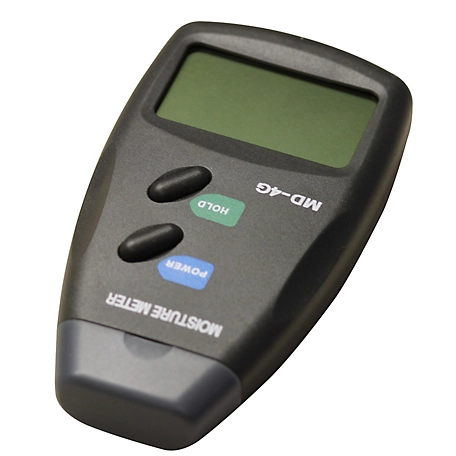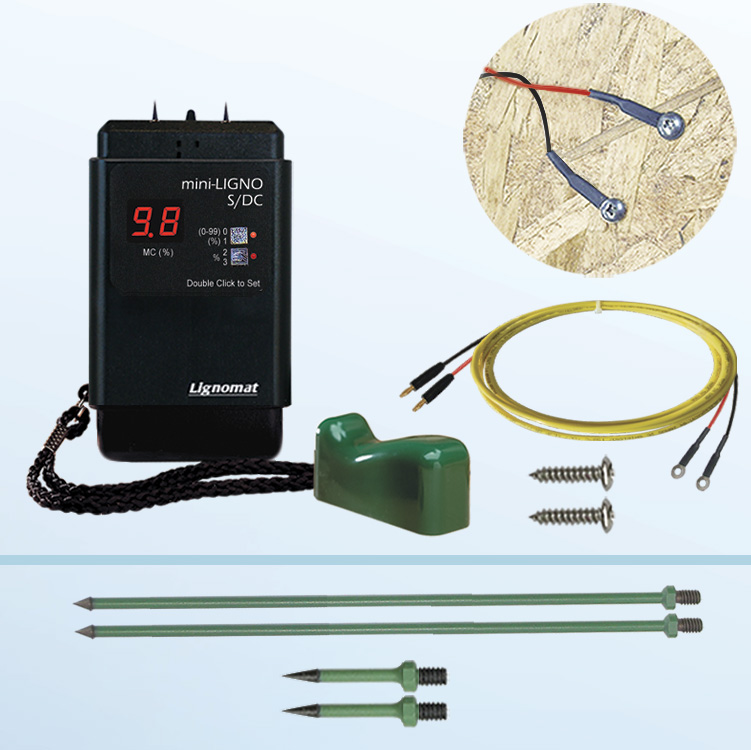Explore the Globe of Moisture Meters: Every Little Thing You Required to Know
In the realm of moisture meters lies a globe of precision and functionality that usually goes unnoticed. These gadgets, while apparently uncomplicated, hold a wealth of info that can dramatically influence numerous sectors and applications. Recognizing exactly how moisture meters run, the different kinds available, and their varied usages can shed light on their importance in making sure top quality and effectiveness. By discovering the details of moisture meters, one can reveal a beneficial tool that goes beyond simple dimension, using understandings that can make a considerable distinction in various areas.
Exactly How Moisture Meters Work
Moisture meters run by determining the electric conductivity or capacitance of products to identify the wetness material existing. These meters are indispensable devices across various markets, consisting of farming, construction, and woodworking. By making use of various approaches such as pin-type or pinless innovation, dampness meters provide accurate readings that assist experts make educated choices.
Pin-type wetness meters function by putting the sharp pins into the material being tested. The electrical conductivity between the pins is then measured, with greater moisture degrees leading to enhanced conductivity. Moisture Meter. On the other hand, pinless moisture meters use electromagnetic signals to scan a larger location without creating any kind of damages to the product's surface. These meters are optimal for swiftly examining wetness levels in big areas or finished products.
No matter the method used, dampness meters play a crucial duty in protecting against concerns such as mold growth, structural damages, or item defects brought on by excess dampness. Comprehending exactly how these meters job is crucial for making sure the high quality and integrity of products in various applications.
Sorts Of Moisture Meters
Provided the crucial function dampness meters play in various markets, it is vital to recognize the different kinds offered to experts for properly analyzing dampness degrees - Moisture Meter. There are mostly two primary kinds of moisture meters: pinless and pin-type dampness meters

On the various other hand, pinless moisture meters utilize electromagnetic sensor plates to check a larger location of the product without causing any kind of damage. This type is suitable for swiftly scanning big areas and is typically used for flooring, wall surfaces, and ceilings. Pinless meters are practical for taking analyses on finished surfaces without leaving any type of visible marks.
Both kinds of dampness meters have their advantages and are selected based upon the particular demands of the task available. Comprehending the differences between these types is critical for professionals to make exact wetness evaluations.
Applications Throughout Industries
With diverse capabilities, dampness meters locate widespread application across various markets, helping specialists in making certain optimal problems for structures and materials. In the farming market, wetness meters are important for establishing the dampness material in grains, seeds, and hay, making certain quality control and protecting against mold development. Building and construction professionals count on dampness meters to analyze the wetness degrees in structure materials like wood, drywall, and concrete, which is vital for keeping architectural stability and protecting against concerns like rot or mold. The flooring sector utilizes moisture meters to determine the moisture material in subfloors prior to mounting numerous flooring, stopping expensive problems as a result of excess dampness. Furthermore, in the food sector, wetness meters are made use of to keep track of and regulate moisture degrees in products such as grains, nuts, and dried out fruits to preserve freshness and quality. Additionally, moisture meters play an important function in the repair and damage control sector by helping professionals identify and resolve water damage in structures quickly. Throughout these diverse industries, dampness meters are essential tools for making certain the high quality, safety, and long life of different products and products.
Tips for Making Use Of Moisture Meters
When measuring the moisture material in numerous products,Utilize the moisture meter's calibration setups to guarantee precise analyses. Calibration is critical for the proper functioning of a wetness meter. Before each usage, it is suggested to examine and adjust the calibration settings according to the certain product being examined. Additionally, view website make sure the meter is readied to the appropriate wetness variety for the product you are determining to acquire one of the most accurate results.
When utilizing a pin-type wetness meter, place the pins to the suitable depth recommended for the product being examined. This makes certain that the wetness readings are taken from the correct deepness within the product, providing a more exact depiction of its wetness content. For pinless dampness meters, bear in mind to preserve proper call with the product's surface to obtain dependable readings.
Routinely examine and replace the batteries in your dampness meter to stop incorrect analyses because of reduced power. When not in use to lengthen its lifespan and keep its accuracy, Shop the meter in a risk-free and completely dry area. By complying with these pointers, you can make best use of the performance of your wetness meter and get accurate dampness content dimensions across different materials.
Maintenance and Calibration
To make certain the accuracy of wetness web content measurements, regular maintenance and calibration of the dampness meter are important action in its correct functioning. Maintenance includes maintaining the dampness meter complimentary and clean from debris that might influence its analyses. It is essential to comply with the maker's standards for cleaning to avoid damage to the gadget. Furthermore, normal calibration is needed to validate the precision of the analyses. Calibration readjusts the moisture meter to ensure that it offers reliable and consistent results.
Calibration must be done regularly, particularly if the moisture meter is used regularly or in critical applications where specific dimensions are needed. Lots of wetness meters come with calibration devices or can be adjusted by expert services. Moisture Meter. It is advised to maintain a log of calibration dates and results to track the efficiency of the dampness his explanation meter gradually. By preserving and calibrating the moisture meter routinely, users can rely on the accuracy of the dampness material measurements gotten.
Conclusion

Finally, dampness meters play a critical duty in different markets by properly gauging the dampness content of products. Comprehending just how these gadgets work, the different kinds readily available, and appropriate upkeep and calibration are vital for acquiring reliable results. Whether in manufacturing, building, or farming, making use of moisture meters helps make sure quality assurance and performance in procedures.

In final thought, moisture meters play an important role in various sectors by properly determining the wetness content of materials.